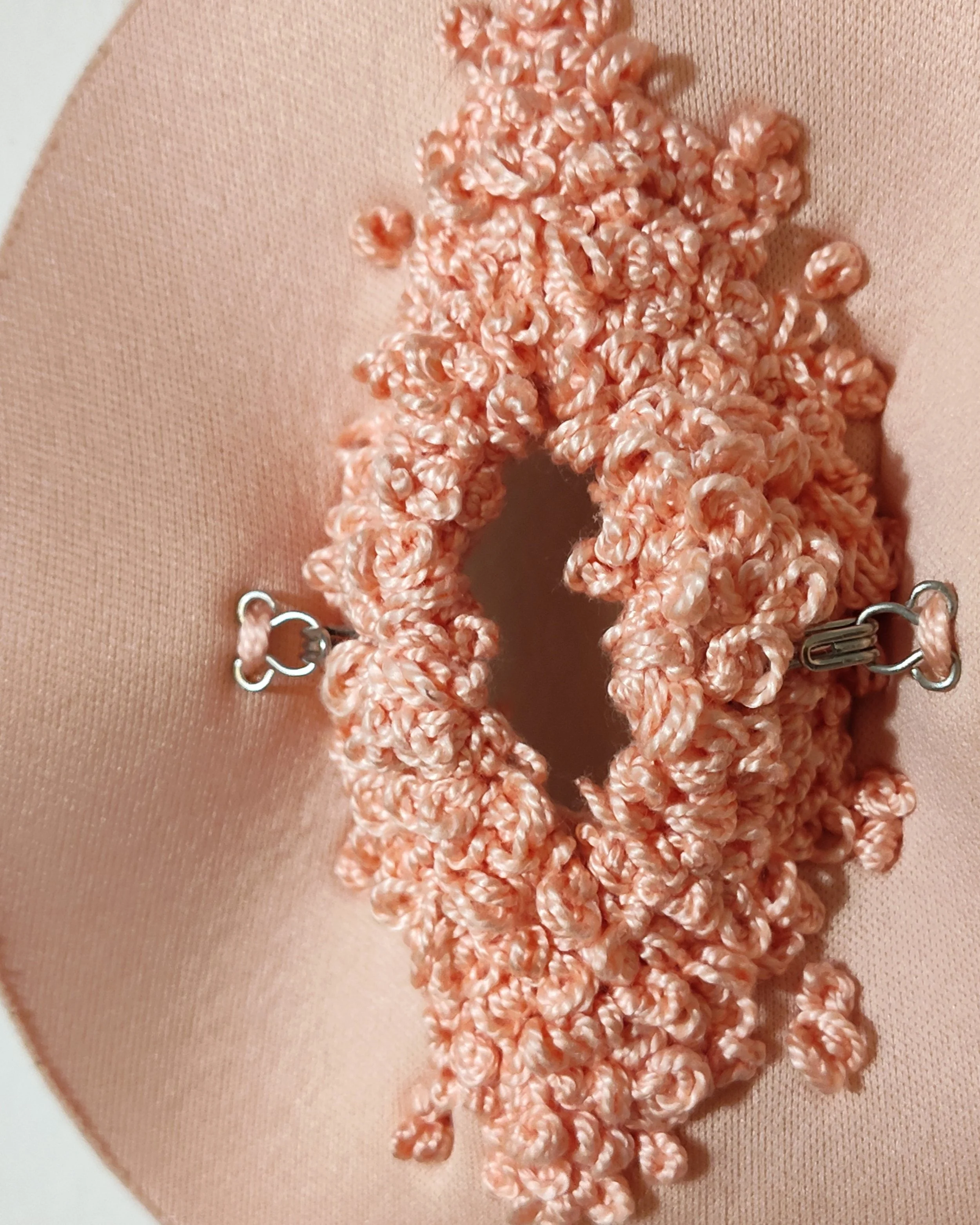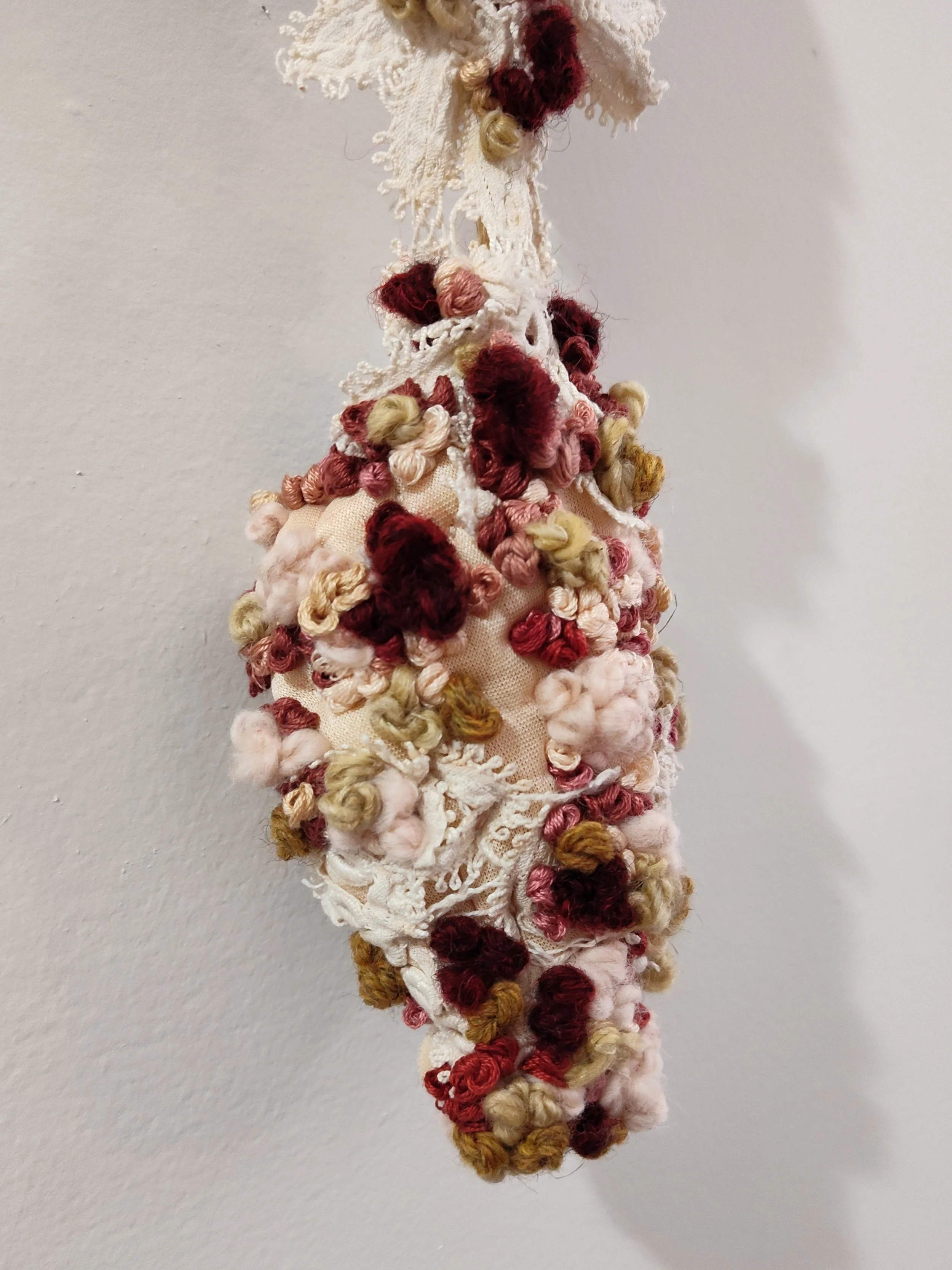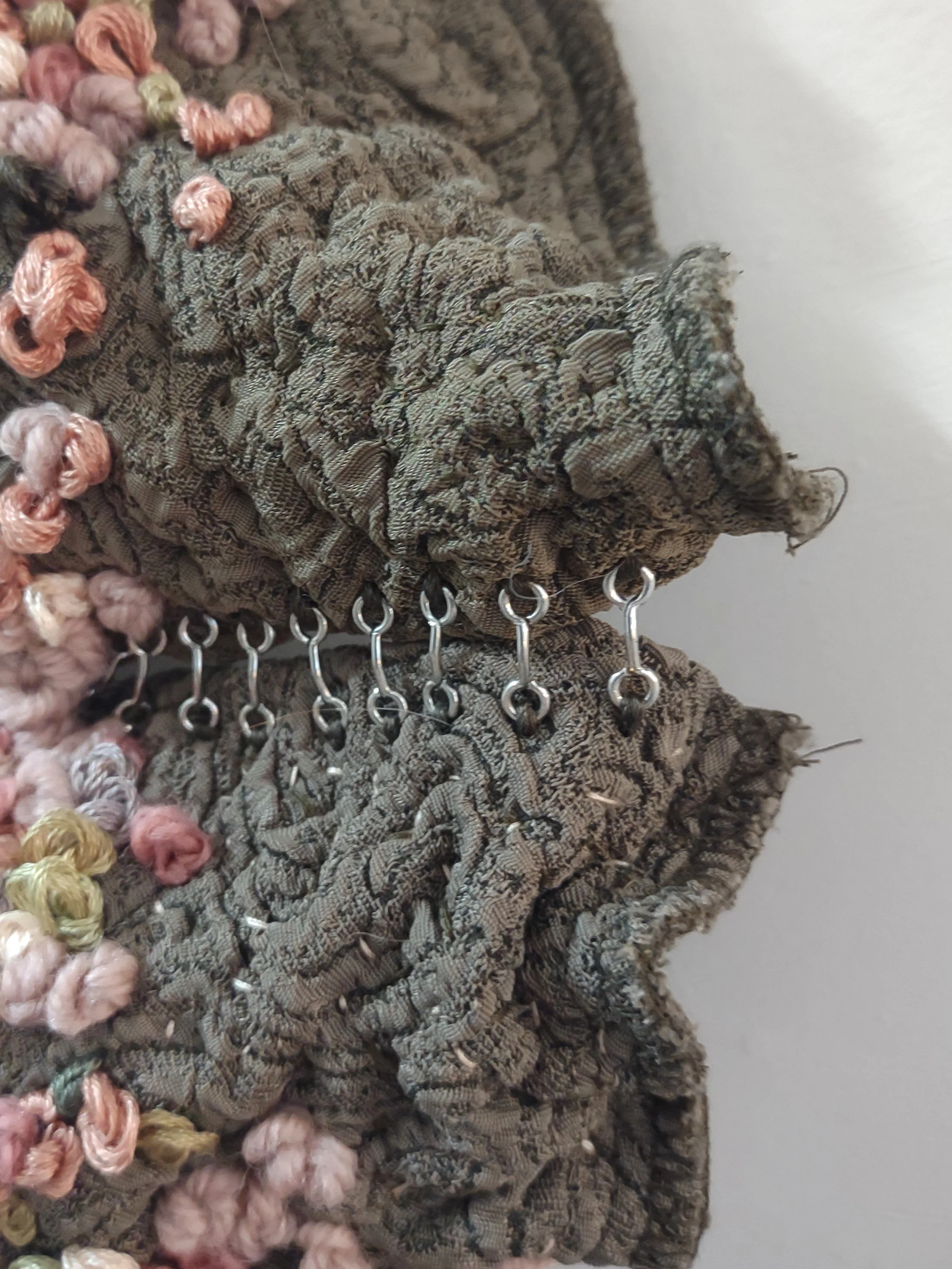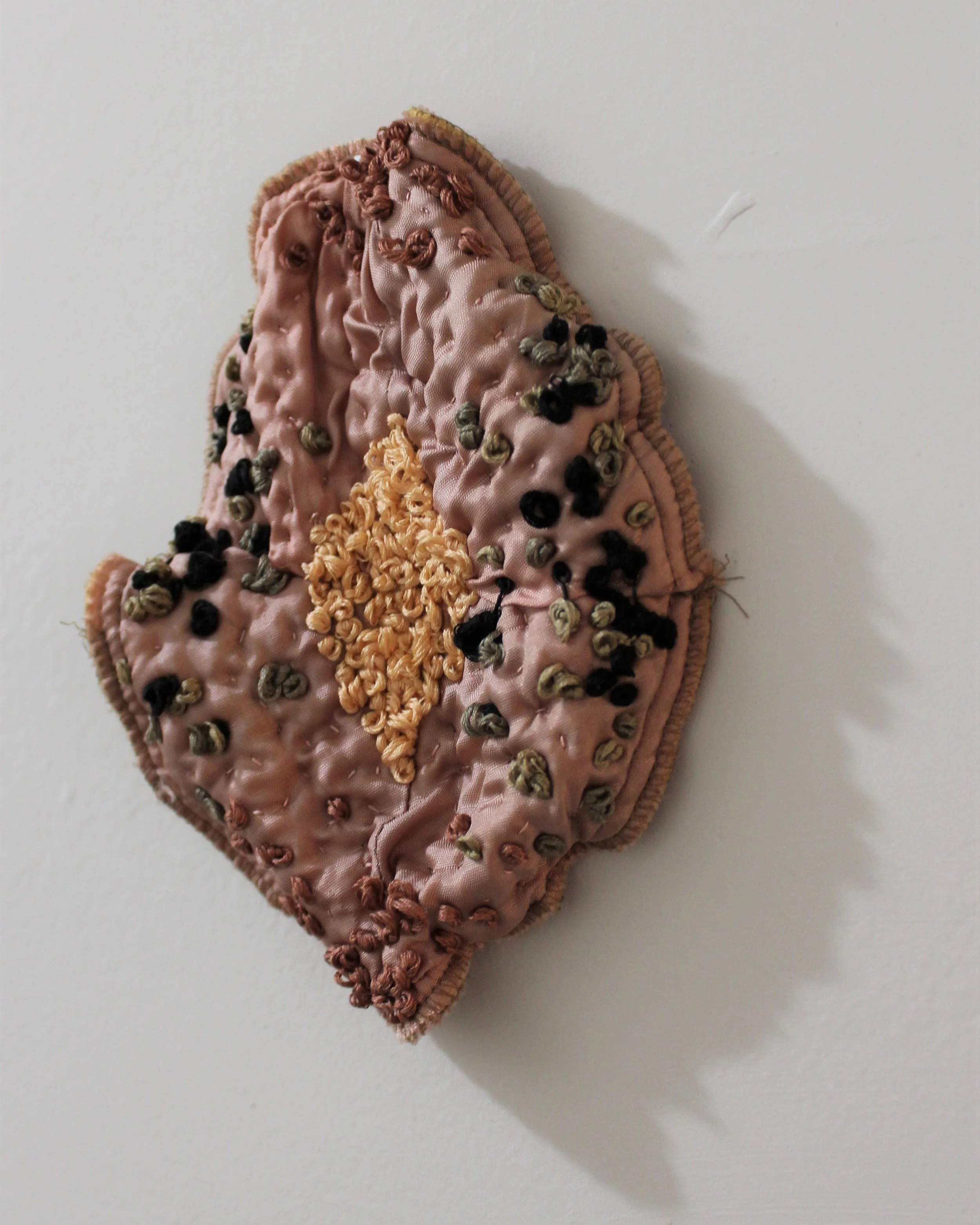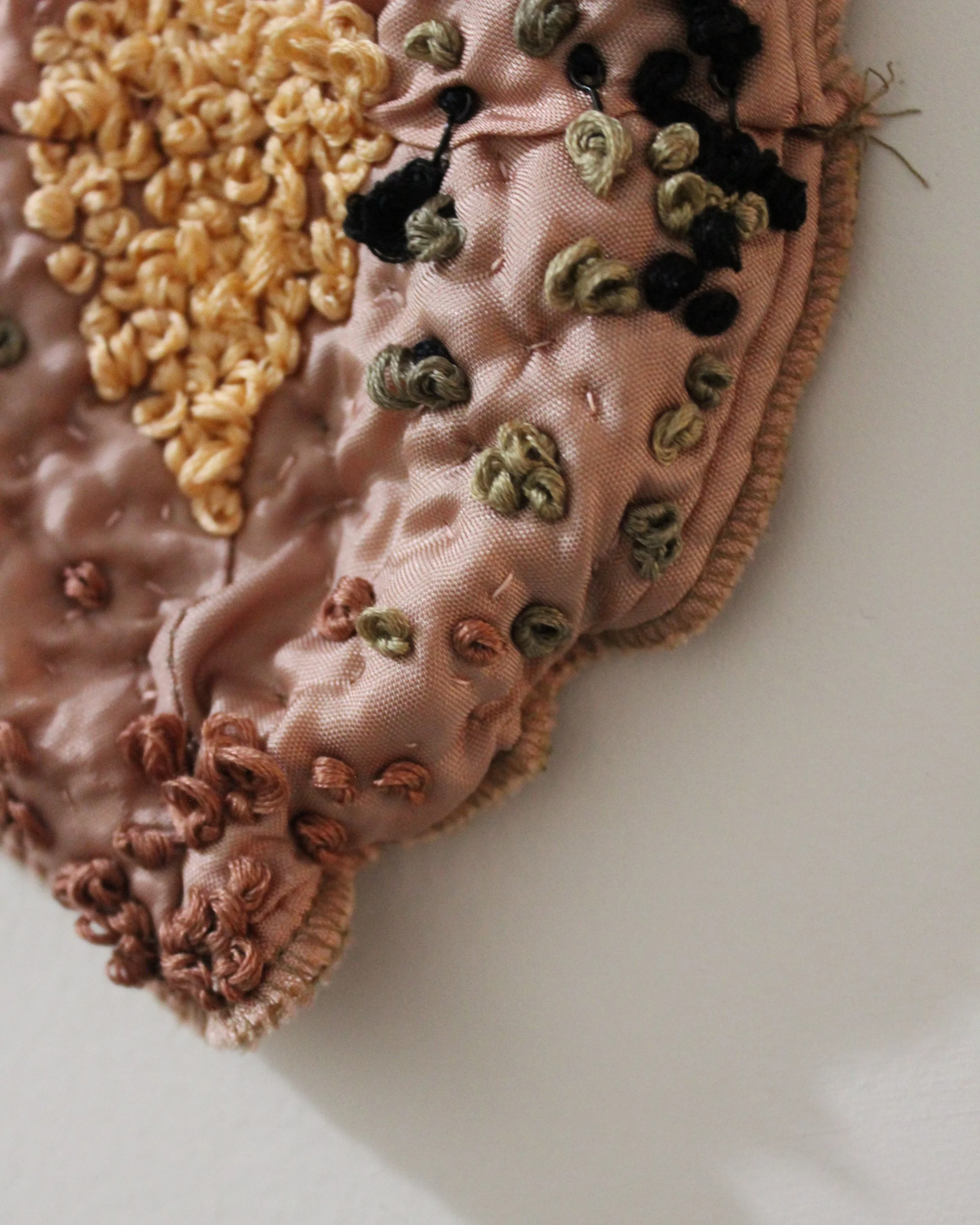Historical research and contemporary theory are inextricably integral to my studio practice and I am heavily influenced by the intellectual genealogies of queer feminist affect theory, the history and theory of craft, and the material culture of women. I signify historical identities of women through my incorporation of textile materials and needlework processes as well as methodologies that center the relationship between tactility and affect. My contemporary needlework practice incorporates found objects and recycled materials including shoulder pads, bra cups, pantyhose, gloves, and sewing notions. These objects interest me in that they imbue the works with memories of material contexts and women’s personal narratives. Needlework has long been associated with the formation of our society’s vision of acceptable femininity and garments have played a large role in attempting to sculpt the female form into an idealized figure. The history and material culture of textiles and needlework provide a framework for honoring centuries of domestic labor performed by women while still leaving room to subvert or reject notions of confinement and the absence of bodily autonomy. The lingering traces of this deeply rooted misogyny profoundly affected my own youth which I am now reliving as I witness our alarming national regression. In recent years, I have begun to unearth my own history and disentangle the consequences of feeling bound to fit within the confines of society’s neurotypical cisheteropatriarchy. Using craft materials and processes in unconventional ways that subvert their inherent functionality challenges the notion that bodies must fulfill their assigned functionality as childbearers in order to be perceived as feminine.

